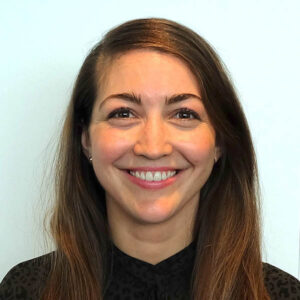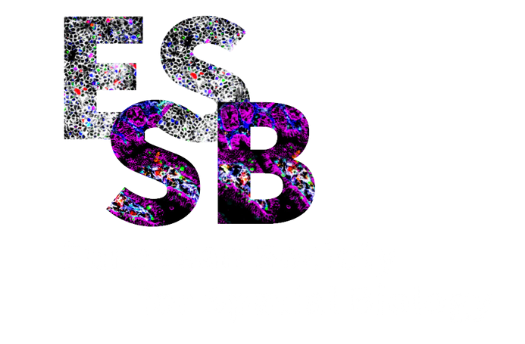Spatial Immunology
Chairs: Anja Hauser and Christian Schürch
Friday, 13.12.2024, 08:30 am

Invited talk by Camilla Engblom
SciLifeLab, Division of Immunology and Allergy, Department of Medicine Solna, Center of Molecular Medicine, Karolinska Institutet, Stockholm and Department of Clinical Immunology and Transfusion Medicine, Karolinska University Hospital, Stockholm, Sweden
Spatially resolving B cell clonal dynamics
B cells perform functions critical to human health, including antibody production and antigen presentation. B cells develop, differentiate, and expand in spatially distinct sites across the body. B cells express clonal heritable B cell receptors (BCR), either as membrane-bound or secreted antibodies, that confer exquisite molecular (i.e., antigen) specificity. B cell receptors can be defined by sequencing, but these methods require tissue dissociation, which loses the anatomical location, and the surrounding functionally relevant environmental cues. Linking specific BCR sequences to their molecular and cellular surroundings, i.e., ‘clonal niche’, could help us understand and harness B cell activity. A technological bottleneck has been to capture the location of BCR sequences, and by extension B cell clonal responses, directly within tissues. We recently developed a spatial transcriptomics-based approach (Spatial VDJ) and associated computational pipelines to reconstruct B cell clonality in human tissues. Here, we present adaptation of Spatial VDJ to murine tissue to enable preclinical studies and B cell receptor dynamics under inflammatory conditions, including cancer.
Biosketch
Dr. Camilla Engblom is a SciLifeLab Fellow and an Assistant Professor in the Division of Immunology and Allergy and the Department of Medicine, Solna at the Karolinska Institutet (KI). Dr. Engblom received her PhD in Immunology from Harvard University in 2017 focusing on long-range cancer-host interactions involving myeloid cells (Dr. Mikael Pittet’s lab at Massachusetts General Hospital/Harvard Medical School). As a MSCA postdoctoral fellow in Dr. Jonas Frisén’s lab (KI), Dr. Engblom developed a spatial transcriptomics-based tool (Spatial VDJ) to map B cell and T cell receptors within human tissues. Located at SciLifeLab and the Center for Molecular Medicine (KI), the Engblom lab’s main research focus is to spatially and functionally resolve B cell clonal dynamics during cancer.
Short talk by Raluca Niesner
Freie Universität Berlin;
Germany Rheumatology Research Center, Berlin (DRFZ) – A Leibniz Institute
MetaFLIMB – longitudinal in vivo NAD(P)H fluorescence lifetime imaging of the femoral marrow
It is well known that phenotypes and functions of immune cells, including myeloid cells, are tightly linked to their metabolic profile, while all three, phenotype, function and metabolic profile, are affected by the continuously changing tissue microenvironment. Focusing on bone regeneration after injury, we aim to understand changes in the metabolism of myeloid cells in bone marrow context, over time. However, therefore technologies providing such kind of information are missing.
We developed our longitudinal intravital imaging of the mouse femur, to enable longitudinal micro-endoscopic fluorescence lifetime imaging (FLIM) for metabolic profiling (“MetaFLIMB”). Using our previously developed reference system of enzyme-dependent fluorescence lifetimes derived from the ubiquitous metabolic co-enzymes NADH and NADPH (NAD(P)H), we can determine preferential enzymatic activities in vivo. We stratify enzymatic activities to identify dominant metabolic pathways voxel-wise pathways serving for energy production, i.e. (1) fatty acid β-oxidation (FAO, indicated by HADH activity), (2) anaerobic glycolysis-like pathways (indicated by LDH activity), (3) a group of pathways encompassing carbohydrate metabolism, including glycolysis (GAPDH activity) pentose-phosphate pathway (SDH and G6PDH activity), tricaboxylic acid cycle (IDH activity) and electron transport chain (Complex I activity), (4) oxidative mechanisms, including oxidative phosphorylation (Oxphos, indicated by PDH activity). Additionally, we distinguish pathways associated to cellular function and cellular state, i.e. oxidative burst (NADPH oxidase activity) and dormancy or death, indicated by low/no NAD(P)H-dependent enzymatic activity, reflected by an increase in unbound (free) NAD(P)H.
Using MetaFLIMB in osteotomized femurs of mice with red fluorescent myeloid cells (LysMCre/+R26LSL-tdRFP), we demonstrate that myeloid cells display highly heterogeneous metabolic profiles both spatially and temporally during bone regeneration. Our results go beyond the binary paradigm of myeloid cells using either glycolytic or oxidative signaling pathways (linked to pro- or anti-inflammatory functions, respectively) derived from in vitro experiment. We attribute the higher metabolic heterogeneity of myeloid cells in vivo compared to in vitro conditions to the dynamic metabolic microenvironment in the bone marrow. Under in vivo conditions, myeloid cells with various metabolic profiles, i.e. using other pathways for energy production than the anaerobic pathway associated with pro-inflammatory cells, performed the oxidative burst necessary for the process of phagocytosis. This demonstrates that a high metabolic flexibility of myeloid cells in vivo is related to their functional flexibility. It suggests that myeloid cells, which perform an oxidative burst and are responsible for clearing of debris at early stages after bone injury, and those responsible for vascular or bone remodeling during the later phases, use distinct pathways for energy production.
Short talk by Katharina Imkeller
Institute of Neurology (Edinger Institute), University Hospital, Goethe University, Frankfurt, Germany;
Frankfurt Cancer Institute (FCI), Frankfurt, Germany;
University Cancer Centre (UCT), Frankfurt, Germany;
MSNZ Group of Computational Immunology, University Hospital, Frankfurt, Germany
Connecting the Spatial Architecture and Immune Function of Tertiary Lymphoid Structures in Glial Tumors
Adult-type diffuse gliomas, the most common primary brain tumors, pose significant clinical challenges due to limited treatment options, restricted anti-tumor immune response and dismal patient prognosis. In this study, we elucidate the immunological function and clinical relevance of intra-tumoral tertiary lymphoid structures (TLS) in adaptive anti-glioma immunity. We conducted a comprehensive, unbiased analysis of lymphoid aggregation in 642 human gliomas using a multi-modal approach that combines RNA sequencing with spatial transcriptome and proteome profiling. Our findings reveal that TLS are present in 15% of tumors and correlate with improved overall survival. Gliomas with TLS exhibit a remodeled perivascular space, marked by transcriptional upregulation and spatial redistribution of collagens associated with barrier functions. Furthermore, we demonstrate that TLS maturation into sites of dynamic adaptive immune responses, characterized by clonal T and B cell expansion and IgA+ and IgG+ plasma-cell formation, is driven by efficient early T cell recruitment to the perivascular space.
Short talk by Vladimir Sukhov
Washington University School of Medicine, St. Louis MO, USA
Advanced Spatial Analysis Highlights Immune Cell Organization in Successful Tumor Rejection After Immune Checkpoint Therapy
A deeper understanding of how immune cells organize within tumors is crucial for developing more effective cancer therapies, as cell organization affects their function and treatment outcomes. By leveraging a reproducible tumor model with well-defined rejection kinetics, here we used advanced analytical methods to interrogate a longitudinal CODEX data set and identify spatiotemporal changes that drive successful tumor rejection upon treatment with immune checkpoint immunotherapy (ICT). Mice with T3 MCA sarcomas were treated with Control Ab or α-PD-1 and α-CTLA-4 antibodies ( ICT), and tumors were analyzed on days 7, 9, 10, 11, and 13 with a 32 antibody panel providing detailed images of 42 tumors. Using unsupervised clustering and classifiers, we analyzed over 13 million cells and identified 13 distinct cell types. Tumor cells decreased by day 10 and were completely eliminated by day 13. This was driven by increased CD4+ T cells clustering with CD8+ T cells and type 1 conventional dendritic cells, forming high-contact clusters. Cellular neighborhood (CN) analysis revealed a lymphoid-rich CN, containing most CD4+ and CD8+ T cells that progressively increases in ICT-treated tumors and is enriched for granzyme B-positive and proliferating T cells. Interestingly, after day 10, these effector T cell populations display distinct kinetics as cytotoxic T cells moved toward remaining tumor cells while proliferating T cells concentrated in the tumor tissue periphery. We next examined the communication rules between CNs by identifying cells at the CN interface and constructing a network of interactions. This technique showed different architectural patterns between control and ICT conditions, indicating that effective immunotherapy alters spatial organization by promoting expansion of the lymphoid-rich CN over the tumor boundary and nearby myeloid CNs. Overall, this study allowed us to develop bioinformatical methods to comprehensively study how T cells coordinate the antitumor response during successful immunotherapy with α-CTLA-4 and α-PD-1.
Short talk by Francesca Bosisio
Translational Cell and Tissue Research Unit, Department of Imaging and Pathology, KU Leuven, Leuven, Belgium
The Leuven institute for single-cell omics (LISCO), KU Leuven, Leuven, Belgium
Department of Imaging and Pathology, University Hospitals Leuven, Leuven, Belgium
Omics Integration Reveals Spatial and Molecular Predictors of Response to Anti-PD-1 Immunotherapy in Metastatic Melanoma
While immune checkpoint-based immunotherapy (ICI) yields promising results in cancer treatment, only a subset of patients responds favorably. The efficacy of ICI is tied to complex interactions within the tumor microenvironment, involving malignant and non-malignant cells. Despite insights into the antitumor role of cytotoxic T cells (Tcy), traditional single-cell analyses miss critical spatial information necessary for understanding cellular interactions and their therapeutic impacts.
Previously, our team used high-dimensional multiplexed immunohistochemistry (mIHC) to study the immune landscape in metastatic melanoma, distinguishing between ICI responders and non-responders. We found that interactions between Tcy and PD-L1+ M1-like macrophages at the tumor-stroma interface predict responses to anti-PD-1 therapy.
Expanding on this, we integrated mIHC with single-cell RNA sequencing and spatial transcriptomics (ST, Nanostring CosMx), delving into the dynamics of these key immune populations. Our findings not only reinforce the pivotal role of these cellular networks but also reveal significant expression gradients of functional markers based on the proximity of macrophages to Tcys. This deeper understanding of spatial and molecular profiles further elucidates the mechanisms driving the response to anti-PD-1 immunotherapy, suggesting pathways for more precise and effective treatments.
Short talk by Aysegül Adam
Charité – Universitätsmedizin Berlin, Department of Periodontology, Oral Medicine and Oral Surgery, 14197 Berlin, Germany
Immune Dynamics, Deutsches Rheuma-Forschungszentrum (DRFZ), a Leibniz Institute, Charitéplatz 1, 10117 Berlin, Germany
Spatial characterization of Innate Lymphoid Cells in oral inflammatory diseases
The oral mucosal barrier is under constant exposure to a variety of antigens and commensals via the upper respiratory tract and the oral cavity which is home to one of the most prevalent chronic-inflammatory diseases, periodontitis. Periodontitis affects up to 47% of the adult population worldwide (~11% in its severe forms). Besides its local effects on tooth supporting structures− destruction of the alveolar bone and the gingiva, periodontitis is coupled with an increased risk of chronic and potentially grievous diseases, incl. cardiovascular diseases, diabetes, and rheumatoid arthritis. However, the immunological mechanism and cellular players regulating the switch from immunity to immunopathology, as well as its possible role in promoting systemic inflammation remain ill-defined. In the last few years innate lymphoid cells (ILCs) emerged as sentinels of mucosal barriers, maintaining barrier integrity, tissue healing and remodeling, features that are disturbed in patients suffering from periodontitis. Since barrier disintegration is one of the main characteristics of periodontitis we set out to investigate ILC localization, and tissue niches in the inflamed gingival tissues. Fluorescent immunophenotyping indicates an expansion of ILCs, and a shift in subpopulations to TNF-α and IL-17A producing subtypes in periodontitis compared to periodontally healthy individuals. MELC (multi-epitope-ligand-cartography), a multiplex immunofluorescence imaging technique allowed for an analysis of distribution patterns of ILCs and characterization of their putative hematopoietic and non-hematopoietic interactions partners within the tissue. Features of innate immune activation such as neutrophil extracellular traps (NETs), as well as chronic stimulation of the adaptive immune system resulting in tertiary lymphoid structure formation were identified for the first time at those sites. Combining our proteomic approach with spatial transcriptomics, we aim to distinctly define immune dynamics within the gingiva in the context of periodontitis.


